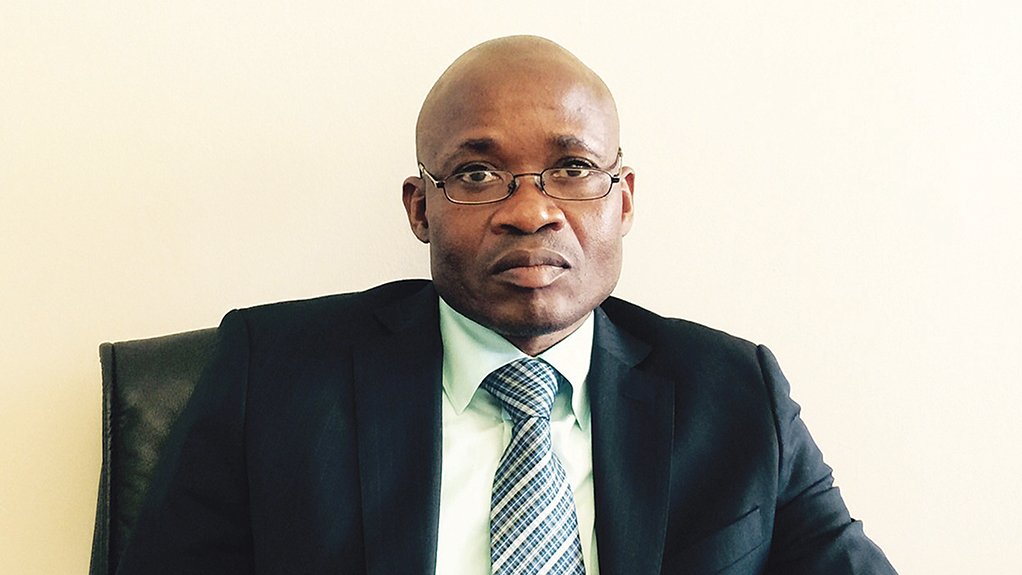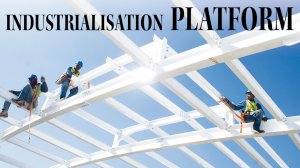Government declares 2015 the year of special economic zones delivery





ECONOMIC DEVELOPMENT The National Treasury has approved incentives for implementation of SEZs to ensure that economic growth takes place through the SEZ programme
JACOB ZUMA The implementation of SEZs aims to bring mainstream economic activity into isolated parts of South Africa
ALFRED TAU The DTI hopes to see a multidimensional implementation of SEZs this year
Out of South Africa’s ten prospective special economic zones (SEZs), three are on the verge of implementation and, before the end of this year, one of them will be completed and implemented, says the Department of Trade and Industry (DTI), which envisions 2015 to be the year for multidimensional SEZ implementation.
In 2012, the DTI released its draft Bill regarding the SEZs, which required the country’s nine provinces to provide feedback and submit proposals for the implementation of SEZs in their regions. Following a positive response from all provinces, ten zones were identified across the country as potential SEZ designations.
According to the SEZ Act of 2014 – signed into law by President Jacob Zuma in May last year – SEZs aim to bring mainstream economic activity to poor and isolated parts of South Africa by leveraging the commercial potential of particular regions. Through SEZs, the aim is to offer a more investor-friendly business environment to attract foreign and domestic investment, create employment opportunities and introduce advanced technology.
The DTI also established the SEZ programme to address weaknesses identified with the industrial development zone (IDZ) programme, including the fact the IDZs were restricted to being established at ports or airports and that tailored incentives for specific industry subsectors could not be pursued.
In response, the SEZ programme indicates that SEZs can be established within an IDZ, where a built industrial estate can leverage domestic and foreign fixed-direct investments in value-added and export-orientated manufacturing industries and services, as well as in zones adjacent to a port of entry where imported goods may be unloaded for value-adding activities within the SEZ for storage, repacking or processing.
SEZs can also be established in free-trade zones, offering storage and distribution facilities for value-adding activities within an SEZ or subsequent export, and in sector development zones, where a zone focuses not only on the development of a specific sector or industry through the facilitation of general and specific industrial infrastructure and incentives, but also on technical and business services primarily aimed at the export market.
Therefore, as growth engines for government’s strategic objectives of industrialisation, regional development and employment creation, SEZs are identified in the 2014/15 to 2016/17 Industrial Policy Action Plan as key contributors to economic development.
Two zones have been identified in Limpopo, including one in Musina, which will focus on petrochemicals, agroprocessing and logistics; one in Tubatse, which will focus on platinum- group metals; and one in Nkomazi, in Mpumalanga, which will focus on agroprocessing.
In the Western Cape, the Atlantis SEZ has been identified as a green-technology SEZ, while the SEZ in Upington, in the Northern Cape, will focus on renewable energy. The Wild Coast, in the Eastern Cape, and the Dube TradePort, in KwaZulu-Natal, will focus on agroprocessing. Nasrec, in Gauteng, will focus on information technology, electronics and film, and Harrismith, in the Free State, will focus on agroprocessing and logistics, while the SEZ in Bojanala, in the North West, will focus on serving the region’s platinum hub.
Incentives on Offer
To ensure the success of the SEZs, the National Treasury approved the incentives aligned with the implementation of SEZs outlined in sections 12I, 12R and 12S of the Income Tax Act (ITA).
Section 12I provides a maximum additional tax allowance of R900-million for a greenfield project with a preferred status, and R550-million for a project with a qualifying status. The maximum additional allowance that can be granted to a brownfield project is R350-million. These incentives are granted based on a percentage of the investment in manufacturing assets.
Section 12R provides a reduced income tax rate of 15%, compared with the standard 28%, for manufacturing firms locating in an SEZ. However, this reduced rate is based on the Trade and Industry Minister and the Finance Minister’s choice of the types of businesses in the SEZs that can qualify for the incentive.
Section 12S provides an accelerated depreciation on a building and a 10% yearly tax allowance on the cost of buildings in the SEZs and their improvements.
DTI chief director Alfred Tau tells Engineering News that, in the department’s quest to use SEZs as a tool to trigger economic growth, the multidimensional implementation that it would like to see capacity building stakeholders and agencies driving for implementation, cluster development to strengthen priority value changes in host regions and marketing and promotion of designated zones to be implemented.
“The SEZs have to move on from a point of designation to a level whereby they have identified clusters which are appropriate for their specific regions,” says Tau, adding that, once this is accomplished, thorough clarity on the implementation of the zones will ensure that the right investments can be allocated to them.
However, Tau highlights government’s decision that, while some SEZs may not be implemented, if investors are interested in a designated SEZ, government will allow investment to take place, while it awaits implementation.
For example, although the Atlantis SEZ has not been pre-approved but is still awaiting implementation, a R300-million investment has been confirmed nevertheless and this demonstrates higher potential for success.
Also, Tau points out that in Tubatse, in Limpopo, for example, the focus is related to beneficiation of platinum-group metals, but investments in information and communication technology are welcomed in the area, should investors find interest in that sector.
Meanwhile, despite the DTI’s optimism to see more implementation of the zones this year, Tau maintains that the implementation of SEZs could derail or progress, depending on the success of the three-tier governmental process, which promotes collaboration between municipalities, provinces and national government.
“On a provincial level, some zones require thorough expertise in driving the SEZ to implementation. Therefore, government needs to help the municipalities and provinces by training officials to ensure that implementation takes place.”
Tau adds that, with the exception of KwaZulu-Natal, the DTI has deployed teams of experts to work with the provinces to support the SEZs.
Meanwhile, the DTI reached a bilateral agreement with the Chinese government in 2013, which requires companies to send South Africans for training in China’s SEZs, so that skills could be transferred and applied in driving South Africa’s SEZ implementation.
Government agreed on a five-year bilateral agreement that allows for a capacity building programme with the Chinese, which enables the DTI to take about 30 officials a year – from across all the country’s SEZs – to China to be trained in the various elements of SEZ design, planning, development and implementation.
“Based on what officials have learnt in China, the skills are considered and modified to suit the South African environment,” Tau highlights.
Single-Factory Zones?
The agreement between South Africa and China to train officials is also driven by the fact that SEZs in countries such as China, Taiwan, Costa Rica, India, Japan and the Republic of Korea have played a leading role in driving economic growth.
Meanwhile, the Manufacturing Circle – which represents South Africa’s exporters – believes that the SEZ Act, in its current form, should consider the possibility of expanding the SEZ programme to major exporters in the manufacturing industry, where it will allow single-factory zones as another type of SEZ in the SEZ programme.
“Single-factory zones differ from all the other traditional zone models in that they offer investors flexibility with regard to choice of location, taking into account the availability of inputs, skilled labour and infrastructure,” says research and advisory firm Cova Advisory partner Tumelo Chipfupa in a research report done on behalf of the Manufacturing Circle on single-factory zones.
He points out that the SEZ Act states that only national government, a provincial government, a municipality, a public entity, a municipal entity or a public–private partnership, acting alone or jointly, may apply to the Minister of Trade and Industry, in the form and manner prescribed, for a specified area to be designated as an SEZ.
This prohibits the existence of single- factory SEZs, as companies would have to partner with government for the establishment of such zones.
Chipfupa mentions that, in countries such as Costa Rica and India, single-factory SEZ programmes have the flexibility to locate close to skills, infrastructure and production inputs, which have contributed to the export success of the programme.
If the Act is amended to include single- factory zones, the Manufacturing Circle believes that this will provide another avenue for economic growth for South Africa.
One of the challenges facing SEZ implementation in South Africa is that the type of zone that needs to be implemented depends on whether the region can assimilate the emerging industrial capabilities of the proposed SEZ.
“If we are trying to make a region a hub, we need to invest in technical expertise that will allow for the industrialisation of the zone to grow,” explains Tau.
He indicates that, while there is massive economic potential in some of the regions, critical support for industrialisation is not in place. For example, in a region with economic potential, there are no technical vocational education and training colleges or universities that will turn investor attraction into industrial capabilities.
“Investor attractiveness alone does not imply that we will develop the industrial capabilities we seek. We need to work systematically to ensure that we do not only attract investment, but also the transfer of skills,” Tau emphasises.
Another challenge facing SEZ establishment is that there are different levels of development and infrastructure in each region, and that SEZs are easier to implement in metropolitan regions, as basic infrastructure already exists. Tau explains adding that, in some regions, basic infrastructure needs to be built from scratch, attracting people to these areas is a challenge.
The Financial Mail alluded to this last month, stating that SEZs can only work if the rest of the economy works. The more business- friendly the surrounding environment, the more such zones can stimulate broad economic activity.
It further noted that making SEZs work for South Africa’s economy – where the interests of a developmental State are caught in the headlights of competitive global markets – was a tall order.
Despite these challenges, Tau states that the progress that has already been made in terms of SEZ implementation puts South Africa in a better global economic position. He adds, however, that the onus is on government to ensure that the country is an investor-friendly zone.
“We are currently finalising the regulations and advisory board, which are important for the implementation of the SEZs,” says Tau, adding that plans around the marketing of the zones to attract more investors are also under way.
“Once all these are completed, we will witness the first implementation of the zones this year,” he concludes.
Comments
Press Office
Announcements
What's On
Subscribe to improve your user experience...
Option 1 (equivalent of R125 a month):
Receive a weekly copy of Creamer Media's Engineering News & Mining Weekly magazine
(print copy for those in South Africa and e-magazine for those outside of South Africa)
Receive daily email newsletters
Access to full search results
Access archive of magazine back copies
Access to Projects in Progress
Access to ONE Research Report of your choice in PDF format
Option 2 (equivalent of R375 a month):
All benefits from Option 1
PLUS
Access to Creamer Media's Research Channel Africa for ALL Research Reports, in PDF format, on various industrial and mining sectors
including Electricity; Water; Energy Transition; Hydrogen; Roads, Rail and Ports; Coal; Gold; Platinum; Battery Metals; etc.
Already a subscriber?
Forgotten your password?
Receive weekly copy of Creamer Media's Engineering News & Mining Weekly magazine (print copy for those in South Africa and e-magazine for those outside of South Africa)
➕
Recieve daily email newsletters
➕
Access to full search results
➕
Access archive of magazine back copies
➕
Access to Projects in Progress
➕
Access to ONE Research Report of your choice in PDF format
RESEARCH CHANNEL AFRICA
R4500 (equivalent of R375 a month)
SUBSCRIBEAll benefits from Option 1
➕
Access to Creamer Media's Research Channel Africa for ALL Research Reports on various industrial and mining sectors, in PDF format, including on:
Electricity
➕
Water
➕
Energy Transition
➕
Hydrogen
➕
Roads, Rail and Ports
➕
Coal
➕
Gold
➕
Platinum
➕
Battery Metals
➕
etc.
Receive all benefits from Option 1 or Option 2 delivered to numerous people at your company
➕
Multiple User names and Passwords for simultaneous log-ins
➕
Intranet integration access to all in your organisation






















